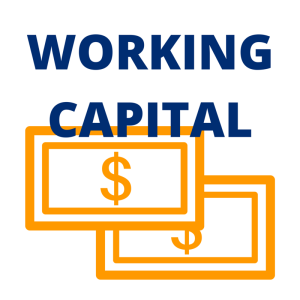 Many small businesses need additional working capital to manage the short term cash obligations of their business. But what IS working capital?
Many small businesses need additional working capital to manage the short term cash obligations of their business. But what IS working capital?
The technical definition is Working Capital = Current Assets – Current Liabilities. This means, how much cash or assets that you can quickly turn into cash do you have on hand? How many monthly payments to vendors, employees, landlords, etc does your business have? The difference between these is your working capital. Your business also has a working capital ratio.
Your working capital ratio is Current Assets divided by Current Liabilities. If your ratio is less than one, you’re probably feeling pretty cash-strapped. If your ratio is more than two, your assets may not be working hard enough for you (ie: you may want to invest them). If you’re in the “less than 1” ratio, you may want to consider a working capital loan. Having the additional cash on hand allows you to focus on running your business and growing your revenue. The saying “it takes money to make money” could be referring to working capital.
Working capital gives you some additional runway to make decisions for your business. Are you forced to decide between payroll and a key upgrade that could help your business make more money? If so, working capital can help you achieve both at the same time, allowing you to grow your revenues and eliminate the stress of figuring out how to satisfy your other obligations on time each month.
Every business is different, and we’re happy to help talk about working capital options to determine if it’s right for your business. Call our inquiry line for an appointment: 510.830.3290.
For more about working capital, click here or here.


